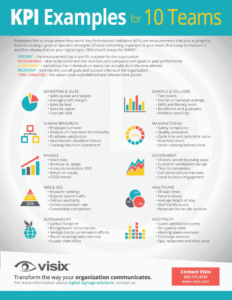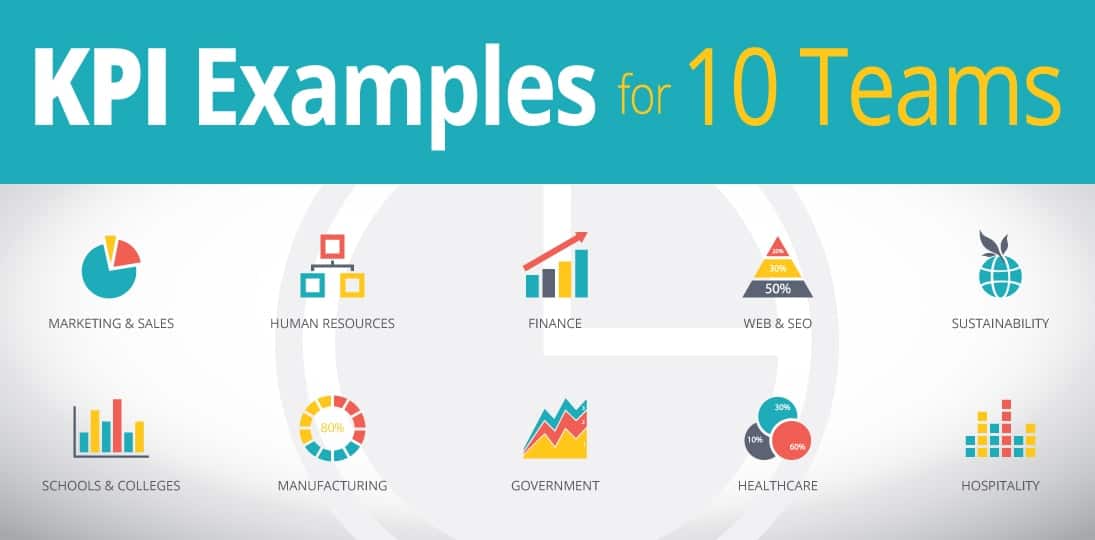Key Performance Indicators are performance measurements that look at progress towards specific strategic goals or achieving various levels of operational targets. They define a set of values to be measured, then those values are fed into systems that summarize that information, where they become “indicators”. The most basic KPI examples are usually for sales, but you don’t have to limit yourself to financial information.
KPIs should always be SMART:
- Specific – the measurement has a specific purpose for the organization
- Measurable – able to be converted into numbers and compared with goals or past performance
- Achievable – something that individuals or teams can actually do in the time allotted
- Relevant – tied into the overall goals and success criteria of the organization
- Time-Targeted – the values cover a predefined and relevant time period
Because KPIs are linked to target values, it’s easy to see if expectations are being met or not. Choose something important to measure, find a way to measure it, and then display that on your digital signs for your target audience. When employees see how the company is doing in an area that is relevant to their jobs, they feel included and create their own intrinsic motivations to do more to reach that goal.
Want to learn how digital signs can help engage employees? Contact us. In the meantime, download our free infographic with these handy KPI examples you can put on screen today:

Want to learn more about metrics for employee motivation? Read our white paper here.
